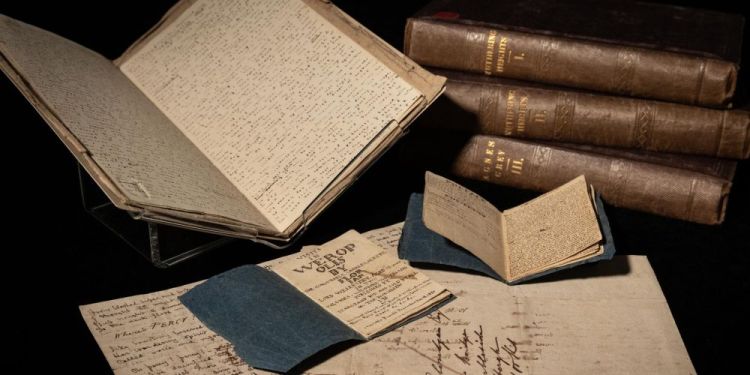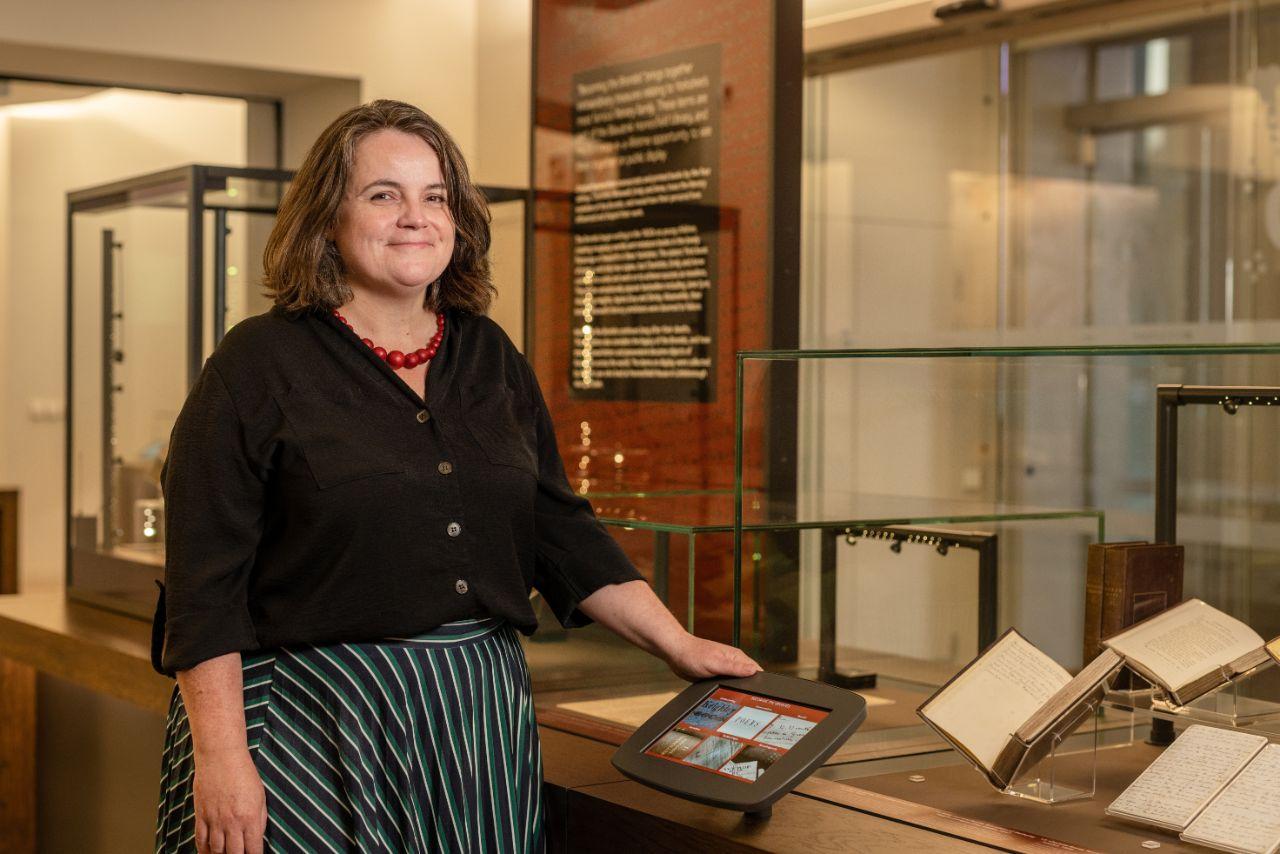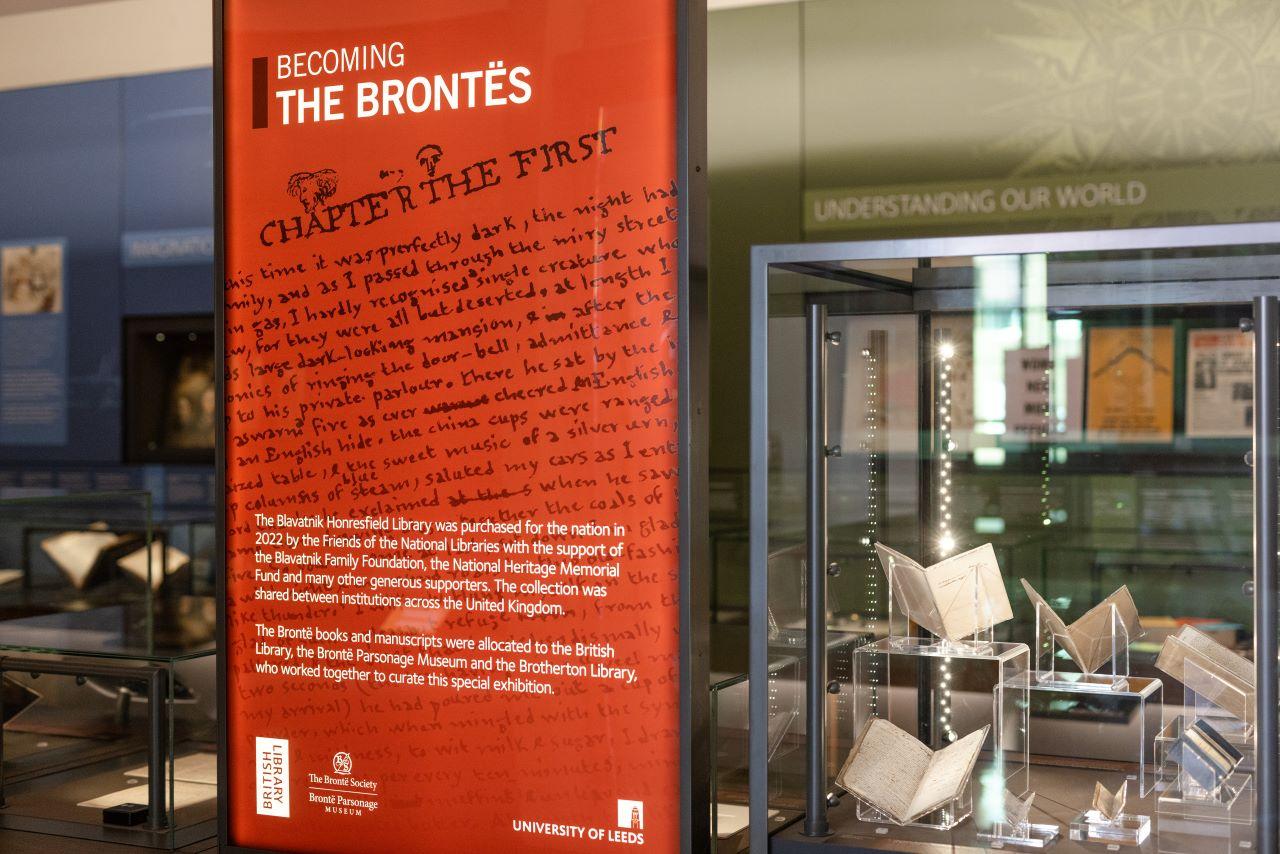Brontë literary treasures on public display together for first time

Handwritten poems, miniature books and printed first editions are going on display at the University of Leeds in a free exhibition tracing the evolution of the Brontës into literary icons.
‘Becoming the Brontës’ offers visitors the unique opportunity to gain a rich insight into the origins of Yorkshire’s most famous literary family. The exhibition follows Charlotte, Branwell, Emily and Anne Brontë on a chronological journey from childhood to the beginning of their literary careers and finally their lasting legacy as genre-defining authors.
This is an extraordinary collection of objects, beautifully displayed, and not to be missed.
Opening on Friday 30 June at the Treasures of the Brotherton Gallery, the exhibition features an array of fascinating manuscripts, handwritten letters, personal sketches and more, together on public display for the first time.
‘Becoming the Brontës’ is co-curated by the British Library, the Brontë Parsonage Museum and the University of Leeds’ Brotherton Library. Many of the items on display come from the Blavatnik Honresfield Library – a unique literary collection that was saved for the nation in a campaign led by the Friends of the National Libraries and a consortium of libraries and writers’ houses including the organisations involved in this exhibition.
What’s on display
The exhibition features incredible items on display together for the first time including:
- A rare, surviving notebook filled with over 30 of Emily’s poems, with annotations by Charlotte, including the handwritten line: “Never was better stuff penned”
- First editions of ‘Jane Eyre’, ‘Wuthering Heights’, ‘Agnes Grey’ and ‘Shirley’, previously owned by the family’s faithful servant Martha Brown
- Emily’s own annotated copy of the first Brontë book, ‘Poems by Currer, Ellis, and Acton Bell’, published under the sisters’ pen names to hide their gender
- Eight miniature books, handwritten and crafted by Charlotte during childhood and adolescence, including two that are bound in packaging originally used for Epsom salts
- A pencil sketch by ten-year-old Emily that shows a small hand reaching through a broken window, evoking the image of Cathy grasping Lockwood’s hand in ‘Wuthering Heights’
- Letters from the sisters that reveal their frustration at errors in first editions of ‘Wuthering Heights’ and ‘Agnes Grey’ and the challenges they faced together to get their work seen by publishers.

Sarah Prescott, Literary Archivist at the University of Leeds, said: “It’s such a privilege to host this exhibition here in Leeds, and to work closely with experts in the field at the British Library and the Brontë Parsonage Museum. The display features some of the most significant Brontë items to come to light, and it’s unlikely that they will be on public display together again in our lifetimes. These items give us intimate insight into the lives, hopes and ambitions of some of the most famous and well-loved writers in English literature.”
Ann Dinsdale, Principal Curator at the Brontë Parsonage Museum, said: “The Brontë Parsonage Museum is proud to have been part of the consortium that fought to save the Blavatnik Honresfield Library for the nation. Now, these wonderful manuscripts will be brought together again, offering unique insight into the intense collaboration and creativity that bound the Brontë children together, making clear their long apprenticeship as writers.”
Scot McKendrick, Head of Western Heritage Collection at the British Library, said: “The British Library is thrilled to have been part of the remarkable and unprecedented collaboration that led to these extraordinary works being preserved for the nation. Now visitors will have the unique opportunity to see these incredible items from the Blavatnik Honresfield Library on display together for the first time and gain an unprecedented insight into the Brontës’ evolution as writers.”
Masud Khokhar, University Librarian and Keeper of the Brotherton Collection at the University of Leeds, said: “It’s a pleasure to share this once-in-a-lifetime collection of literary treasures with the public in this free exhibition. Making collections accessible for the public good is at the heart of the University of Leeds Libraries vision. This unprecedented collaboration has brought together the collections and curatorial expertise of the Brotherton Library, the British Library and the Brontë Parsonage Museum to celebrate the literary lives and legacy of the Brontës and the saving of the Blavatnik Honresfield Library for the nation.
“This is an extraordinary collection of objects, beautifully displayed, and not to be missed.”
Becoming the Brontës is open to the public from Friday 30 June to Saturday 28 October
Tickets: Free, no booking required
Opening hours: Tuesday to Saturday, 10.00am-5.00pm
Location: Treasures of the Brotherton Gallery, Parkinson Building of the University of Leeds, Woodhouse Lane, Leeds, LS2 9JT

Further information
For media enquiries, including visits and interviews, please email Mia Saunders, External Communications and Campaigns Officer at the University of Leeds on m.saunders@leeds.ac.uk.
Pictured above:
-
An arrangement of items on display at ‘Becoming the Brontës’. Image: Mark Webster Photography / University of Leeds.
-
Charlotte Brontë, “Fireside Tales, or the Return to Zamorna”, December 1836 - January 1837
-
Emily and Anne Brontë, First edition of Wuthering Heights and Agnes Grey, London, 1847
-
Charlotte Brontë, “Visits in Verreopolis by Lord Charles Wellesley in Two Volumes”, 7-11 December 1830
-
Branwell Brontë, autograph letters to Hartley Coleridge, 10 April - 27 June 1840.
The Brontë Society & Brontë Parsonage Museum
The Brontë Society is one of the oldest literary societies in the English-speaking world and was founded in Bradford in 1893. The Society is a registered charity and an Arts Council England National Portfolio Organisation. Its vision is ‘to bring the Brontës to the world and the world to Yorkshire.’
The Brontë Parsonage Museum was the home of the Brontë family from 1820 to 1861 and was gifted to the Brontë Society in 1928. The Museum houses the world’s largest collection of artefacts and documents associated with the Brontë family and their work, and continues to inspire scholars, writers and artists.
The Brontë Parsonage Museum is situated in Haworth, Keighley, West Yorkshire, BD22 8DR.
www.Brontë.org.uk. 01535 642323
Follow on Facebook Brontë Parsonage Museum; twitter @BrontëParsonage; Instagram @Brontë parsonagemuseum
The British Library
We are the national library of the UK and we are here for everyone. Our shelves hold over 170 million items – a living collection that gets bigger every day. Although our roots extend back centuries, we aim to collect everything published in the UK today, tomorrow and far into the future. Our trusted experts care for this collection and open it up for everyone to spark new discoveries, ideas and to help people do incredible things.
We have millions of books, and much more besides. Our London and Yorkshire sites hold collections ranging from newspapers and maps to sound recordings, patents, academic journals, as well as a copy of every UK domain website and blog. Our public spaces are a place to research, to meet friends, to start up a new business or simply to get inspired by visiting our galleries and events. We work with partners and libraries across the UK and the world to make sure that as many people as possible have the chance to use and explore our collections, events and expertise. And we’re always open online, along with more and more of our digitised collection.
The Blavatnik Honresfield Library
The campaign to save the Blavatnik Honresfield Library was led by the Friends of the National Libraries and a consortium of libraries and writers’ houses.
The acquisition was made possible thanks to the exceptional munificence of Sir Leonard Blavatnik and of the National Heritage Memorial Fund (NHMF).
Success would also not have been possible without the hugely generous support of each of the consortium institutions and of very many funders including:
The Prince of Wales Charitable Foundation
The Murray Family
Camelot Group
The Foyle Foundation
The David Cock Foundation
The T S Eliot Foundation
Hugh and Catherine Stevenson
Berkeley Foundation
British Library Collections Trust
American Trust for the British Library
B. H. Breslauer Fund of the American Trust for the British Library
The Ardeola Trust
Tracy Chevalier
The Vogel-Denebeim Family
The Penchant Foundation
And the many philanthropists, trusts and foundations who prefer to remain anonymous, and the thousands of individuals who made personal donations to the appeal.



